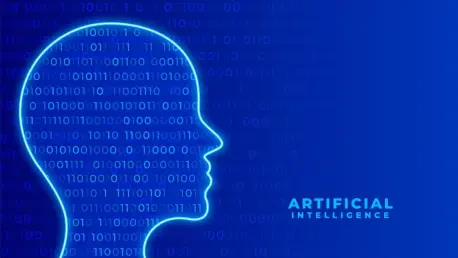In today’s fast-evolving digital landscape, enterprise software stands as the backbone of global business operations, yet the complexity of development processes often hampers efficiency and innovation. With organizations struggling to modernize legacy systems while meeting stringent security demands, a groundbreaking partnership has emerged to address these challenges head-on. IBM, a titan in enterprise technology, and Anthropic, a pioneer in safe AI models, have joined forces to introduce an AI-first Integrated Development Environment (IDE) that promises to redefine how software is created, maintained, and scaled in complex business environments. This collaboration signals a transformative shift, leveraging cutting-edge AI to tackle long-standing pain points in the industry.
The Enterprise Software Landscape: Current State and Importance
The enterprise software industry plays a pivotal role in enabling businesses to operate seamlessly across diverse sectors, from finance to healthcare. It underpins critical functions such as data management, customer relations, and operational workflows, driving efficiency in an increasingly digital world. As companies scale, the demand for robust, adaptable solutions has never been higher, with software becoming the linchpin of competitive advantage in regulated and unregulated markets alike.
Key segments like development tools, cloud integration, and application modernization dominate this space, reflecting the diverse needs of modern enterprises. Development tools empower coders to build tailored applications, while cloud integration ensures accessibility and flexibility across hybrid environments. Application modernization, meanwhile, addresses the urgent need to update aging systems, a task that remains a significant hurdle for many organizations.
Major players like IBM, with decades of leadership in enterprise solutions, continue to shape the market alongside emerging AI innovators like Anthropic. IBM’s expertise in hybrid cloud architectures and deep roots in regulated industries position it as a trusted name, while AI technologies are rapidly gaining ground, offering new ways to enhance productivity and security. The convergence of these forces underscores the growing importance of enterprise-grade solutions that prioritize scalability and compliance, especially in sectors where data protection is non-negotiable.
AI in Enterprise Software: Trends and Market Insights
Emerging Trends in AI-Driven Development
The integration of AI into software development marks a seismic shift, particularly in tools like IDEs that boost developer productivity by automating repetitive tasks. These environments are evolving to include intelligent code suggestions and error detection, allowing teams to focus on creative problem-solving rather than mundane coding challenges. This trend is reshaping how enterprises approach software creation, making processes faster and more intuitive.
A notable development is the rise of agentic AI and autonomous systems, which can make independent decisions within defined parameters. Models like Anthropic’s Claude, renowned for safety and reliability, are becoming integral to these systems, ensuring that automation does not compromise trust. Additionally, the demand for context-aware coding—where AI understands project-specific nuances—and end-to-end process automation presents vast opportunities for innovation in the development lifecycle.
Application modernization also benefits immensely from AI, as it streamlines the often arduous task of upgrading legacy systems. By automating framework migrations and refactoring large codebases, AI tools reduce both time and cost, addressing a critical need for businesses stuck with outdated infrastructure. This convergence of AI and development signals a future where manual intervention in routine tasks could become minimal.
Market Growth and Performance Metrics
Data on AI tool adoption in enterprise software reveals striking productivity gains, with IBM’s early IDE tests showing an impressive 45 percent improvement among internal adopters. Such metrics highlight the tangible benefits of AI-first environments, which not only accelerate development cycles but also maintain high standards of code quality. These gains translate into substantial cost savings for organizations managing extensive software portfolios.
Looking ahead, growth projections for AI-driven development platforms are robust, with market expansion expected to surge between now and 2027 as businesses increasingly prioritize efficiency. Analysts anticipate that scalable AI solutions will drive significant reductions in operational overheads, particularly for enterprises with complex IT ecosystems. The demand for such tools is poised to reshape budget allocations, with more resources directed toward intelligent systems.
A forward-looking perspective suggests that the market for AI-first IDEs will continue to grow, fueled by the need for seamless integration across hybrid cloud setups. As more companies recognize the value of these tools in enhancing competitiveness, adoption rates are expected to climb, positioning AI as a cornerstone of enterprise software strategy in the coming years.
Challenges in Integrating AI into Enterprise Software
Implementing AI within enterprise software is not without obstacles, as compatibility with existing infrastructure often poses a significant barrier. Many organizations rely on intricate, legacy systems that resist integration with modern AI tools, leading to fragmented workflows. This mismatch can stall progress, requiring substantial investment in bridging technological gaps.
Beyond compatibility, concerns around data privacy and security vulnerabilities loom large, especially when automating sensitive codebases. The risk of introducing errors during automation or exposing critical data underscores the need for robust safeguards. Maintaining code quality amidst rapid AI-driven development also remains a challenge, as speed must not come at the expense of reliability or performance.
Solutions are emerging to address these hurdles, with IBM and Anthropic emphasizing a security-first design in their IDE. Features like ‘shift-left’ vulnerability scanning, which identifies issues early in the development cycle, help mitigate risks. Additionally, strategies to ease resistance to change—such as phased rollouts and comprehensive training—play a vital role in aligning traditional workflows with AI-driven approaches, ensuring smoother transitions for development teams.
Regulatory and Compliance Considerations for AI Tools
Navigating the regulatory landscape is a critical aspect of deploying AI in enterprise software, as data protection laws and industry standards impose strict requirements. Frameworks like GDPR and sector-specific mandates demand that AI tools handle sensitive information with the utmost care, a non-negotiable priority for businesses operating in regulated environments. Compliance is not just a legal obligation but a foundation for trust.
Specific challenges, such as achieving FedRAMP hardening for government contracts or transitioning to quantum-safe cryptography, highlight the complexity of these requirements. Such standards ensure that AI systems withstand evolving threats, but they also necessitate specialized expertise and resources. Enterprises must align their tools with these benchmarks to avoid penalties and maintain operational integrity.
IBM and Anthropic demonstrate a strong commitment to governance through initiatives like the Agent Development Lifecycle (ADLC), a framework for designing and managing AI agents. By adhering to such methodologies and contributing to open standards, they foster confidence among stakeholders. This focus on regulatory adherence not only builds trust but also accelerates adoption in sectors where compliance is a prerequisite for implementation.
Future Outlook: AI’s Role in Shaping Enterprise Software
The long-term impact of AI-first IDEs on enterprise software development appears profound, with the potential to redefine how businesses approach technology. These tools are likely to become integral to strategic planning, enabling faster innovation cycles and more agile responses to market shifts. Their influence may extend beyond coding to broader operational frameworks, reshaping entire IT landscapes.
Emerging innovations, such as deeper integration of Claude AI into IBM’s expansive product suite, point to a future where AI permeates multiple facets of enterprise technology. Beyond immediate applications, concepts like the Model Context Protocol (MCP) community contributions could standardize AI deployment, fostering interoperability. Such open standards might act as disruptors, challenging proprietary systems and encouraging collaborative progress.
Global economic conditions, evolving developer preferences, and the push for responsible AI will also shape this trajectory. Economic fluctuations could influence investment in AI tools, while developers’ demand for intuitive, ethical systems will drive design priorities. Balancing innovation with accountability remains crucial, ensuring that AI’s growth in enterprise software aligns with societal and business expectations over the long haul.
Conclusion
Reflecting on the transformative journey of IBM and Anthropic’s partnership, it becomes evident that their AI-first IDE marks a turning point for enterprise software development. This collaboration tackles pressing challenges, from productivity bottlenecks to security concerns, while setting a benchmark for compliance and innovation. The impressive 45 percent productivity gain in early tests underscores the tangible impact of their efforts, paving the way for widespread change.
Looking ahead, enterprises are encouraged to adopt AI-driven tools with a clear focus on governance, ensuring that scalability and responsibility go hand in hand. A strategic approach to integration, supported by frameworks like the ADLC, offers a roadmap for success. By investing in training and phased implementations, businesses can navigate the complexities of this transition effectively.
Ultimately, the path forward demands a commitment to continuous improvement and collaboration across the industry. Stakeholders need to champion open standards and share best practices, amplifying the benefits of AI for all. This partnership lays a strong foundation, but sustained effort and adaptability are essential to fully realize AI’s potential in reshaping enterprise technology for future demands.









